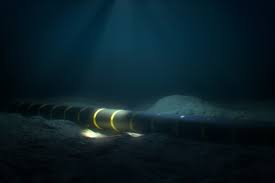China’s state-owned telecommunications companies have launched a $500 million underwater fiber optic internet network project. It should connect Asia, the Middle East and Europe. This move is seen as a direct challenge to a similar project being implemented by the United States.
What is known about the project
The cable, called EMA (Europe-Middle East-Asia), is to become one of the most modern and longest submarine cable networks in the world. It will connect Hong Kong with the Chinese island province of Hainan before continuing to Singapore, Pakistan, Saudi Arabia, Egypt and France.
This ambitious project is being carried out by China’s three main telecommunications operators:
- China Telecom,
- China Mobile Limited,
- China Unicom.
It will be manufactured and installed by HMN Technologies Co Ltd, a fast-growing cable firm formerly controlled by Huawei.Important! It is noteworthy that HMN Tech receives generous subsidies from the Chinese government for the implementation of the project, which indicates strong government support and direct interest of the country.
Why is the EMA so important for China.
The EMA cable is expected to bring several benefits to China.
- First , it will provide ultra-fast connectivity between Hong Kong and the rest of the world, allowing seamless data transfer and communication.
- Second , having their own Internet network will ensure that state-backed Chinese carriers are protected in case they are excluded from US-supported networks in the future, ensuring uninterrupted connections and communication channels.
The confrontation between the superpowers is growing
The move comes amid escalating tensions between China and the US, with Washington actively seeking to block Beijing’s involvement in global cable infrastructure projects. The US government is concerned that Beijing could potentially intercept all Internet traffic passing through the cables it manufactures and installs, and over the past four years has thwarted several Chinese submarine cable projects that were intended to include US interests.
- For example, Washington has blocked licenses for new private undersea cables that would connect the United States to Hong Kong, including projects led by tech giants like Google and Amazon.
- The EMA project also has to compete with another cable being built by the American company SubCom LLC, which runs along a similar route. The SeaMeWe-6 line will connect Singapore with France via Pakistan, Saudi Arabia, Egypt and other countries.
- The U.S. Department of Commerce sanctioned HMN Tech in December 2021, alleging that the company was about to acquire American technology to help upgrade communications channels for China’s People’s Liberation Army.
Interesting fact! At first, the SeaMeWe-6 consortium included a Chinese trio of operators and HMN Technologies as a contractor, but due to pressure from the US government, the work was entrusted to SubCom.
Information artery
Submarine cables are vital to international Internet traffic, carrying over 95% of all data . These high-speed links are traditionally owned by groups of telecommunications and technology companies that pool their resources to ensure uninterrupted data transmission around the world.
However, with the growing vulnerability of these cables to espionage and sabotage, they have become another tool of influence in the escalating rivalry between the United States and China. Both countries compete for dominance in advanced technologies that could determine economic and military advantage in the coming decades.
Completion of the EMA cable is expected by the end of 2025, and this is likely to have significant implications for the ongoing technology rivalry between China and the United States. As both superpowers continue to invest in advanced technology and infrastructure projects, the struggle for dominance in global communications and communication shows no signs of fading away.
Source: https://24tv.ua/
